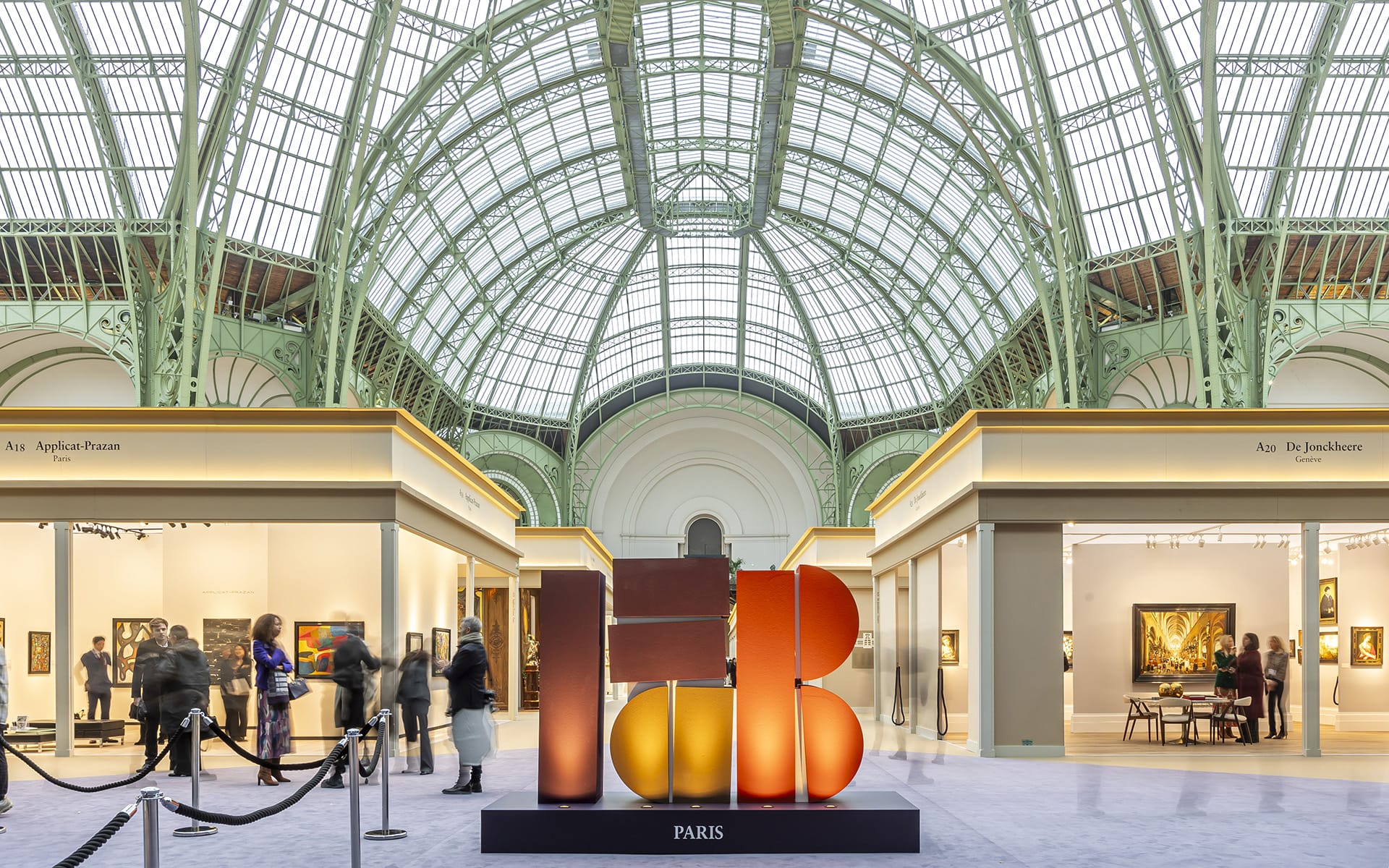Discover the Extraordinary Works at FAB Paris 2024
From le gout Rothschild to that of Chanel and Madonna, this French fair covers many bases

The Grand Palais in Paris has been a busy place since it reopened this year, following a spectacular three-year renovation. The dazzling Beaux Arts building, constructed in 1900 as a site for large-scale cultural events in the very center of the city, hosted Fencing and Taekwondo during the Olympics; and successful editions of Art Basel Paris and Paris Photo in October.
Now it has opened its doors to the world of antiques and more contemporary wonders that include an ancient Egyptian burial mask once owned by Coco Chanel and a present-day jeweler whose extravagant pieces have been worn by Madonna. The fair is called FAB Paris, or Fine Arts Biennale, and runs from Nov. 22-27.
“It’s about diversity, to show the incredible range of what is available,” says the fair’s president, Louis de Bayser, while describing exhibits which span 3,000 years and six continents. “We mix up all the specialities and hope to create a series of surprises for all the visitors. We have found ourselves selling drawings to people who’ve never bought one before.”

At his gallery, De Bayser, which specializes in the finest drawings, red dots were everywhere, including on a notable ink work by Delacroix paying homage, as the artist so often did, to Rubens in its composition. In this case, it was a reprisal of Ruben’s Massacre of the Innocents—a swirl of anguished figures.
Visitors to the fair, according to De Bayser, are predominantly French, along with Belgians and Swiss. “But there are always Americans in Paris, and they are important collectors,” he says. For those exhausted by the range of works, Roche Bobois had furnished a comfortable and generous VIP area on the first floor gallery, which runs around the entire building and offers a bird’s eye view of the business below.
Below are the can’t-miss highlights at this year’s edition:

1. Jousse Entreprises: French Specialities
At Jousse Entreprises, run by father and son Philippe and Matthias, the emphasis is always on the French stars of the 20th century—Perriand, Prouvé and Serge Mouille among them. “We decided to bring some highlights to FAB,” said Matthieu, at the first booth to greet visitors entering the fair. Among these was a one-off sofa by Martin Szekely, made to commission for a private client in 1992. Sitting on sturdy round wooden legs, the sofa is all swelling curves and soft edges, upholstered in an off-white wool and nearly 10 feet long. Next to it, an equally surprising cabinet by Jean Royere and Max Ingrand from 1937, made as a virtuoso piece for the 1938 Salon d’Automne fair. Royere’s strict oak frame encloses panels of yellow and orange glass framed in steel circles. On sale for around $220,000.


2. Lydia Courteille: Jeweler to the Stars
The Parisian Lydia Courteille used to be a biochemist. Now she makes the kind of jewelry that stops you in your tracks with its opulence and exuberance. Madonna and Catherine Deneuve have worn her pieces and Karl Lagerfeld was a major fan. The latest collection, dedicated to Sicily and called Revoir Palerme, pulls no punches. She captures the vibrancy of the Italian island in opals, diamonds, green Paraibas, bumblebee jasper, sapphires and yellow tourmalines. “It’s about lemons, sunshine and lush vegetation,” says Courteille. “And cactus and volcanoes. I was inspired by the landscape.”

3. Montanari: Framed
Galerie Montanari goes back to 1978, when it was founded by Amedeo Montanari to provide the best European picture frames from the 16th to 20th centuries. “We work with museums, private galleries and private collectors,” say Capucine Montanari-Fleury, who now runs the business. “You can really elevate an artwork, and add value, when you place it in a beautiful frame,” she says. Dealing with priceless works take skill and knowledge and the workshop uses only neutral materials to protect the paintings, and comply with museum standards. Recently Montanari worked with the Leiden Collection in New York, that owns some of the finest Dutch masterpieces, to provide a black lacquered frame for a work by Vermeer called Young Woman Seated at a Virginal.

4. Cybele: Provenance Chanel
Gabrielle Chanel was often shown in her rue Cambon apartment surrounded by exquisite objects and coromandel screens. At the Parisian gallery Cybele is another example of her taste: a highly refined stucco mask of a young woman, made for an Egyptian sarcophagus and dating to 55-100 AD. “Chanel must have found it beguiling,” says dealer Tanguy Moreau, referring to its detailed crown, curling hair and elaborate earrings. Moreau has noticed an emergence of younger collectors for his works of antiquity, such as a small male torso in marble (1-2C AD) his shoulders and back draped with a shawl. “They start with modern art, but now they are finding their way back to the archaeological,” he says.

5. Le Gout Rothschild: The Mediterranean Version
In 1864, Beatrice Rothschild, of the famous banking family, married into another dynasty by choosing banker Maurice Ephrussi. The villa they created in the South of France—la Ile de France—is evoked here by the feted French designer Jacques Garcia. Rothschild was a wild child, driving her own Rolls-Royce, throwing a wedding party for her dogs and gambling hard. But she found time to collect the best of everything. Among the delights are porcelain from Sevres and Meissen, Qing dynasty screens and an adjustable 18th century card table by René Dubois. She assembled it all in the vast pink villa overlooking the sea, to create a lighter version of the Rothschild taste (known as an almost oppressive abundance of delights) washed by Mediterranean light and scented by the coastal air.